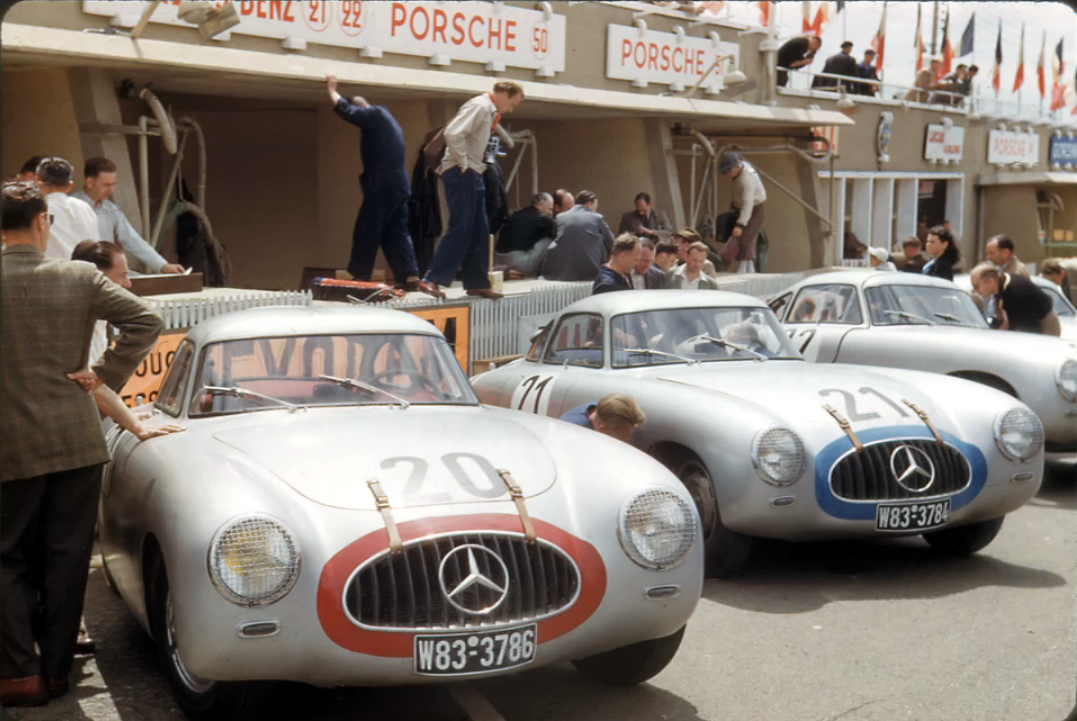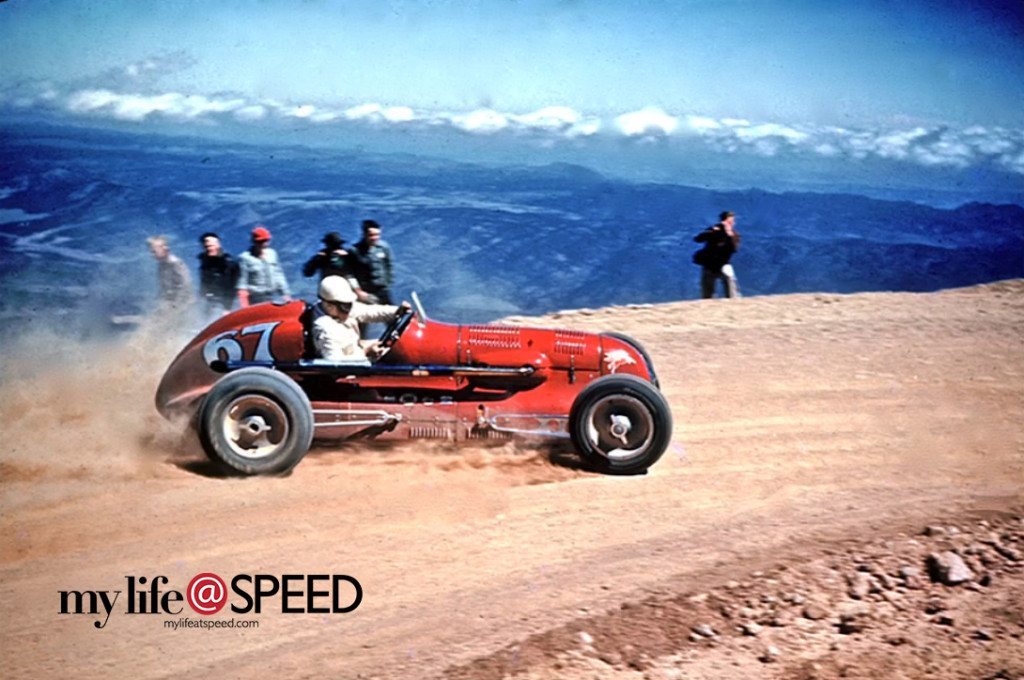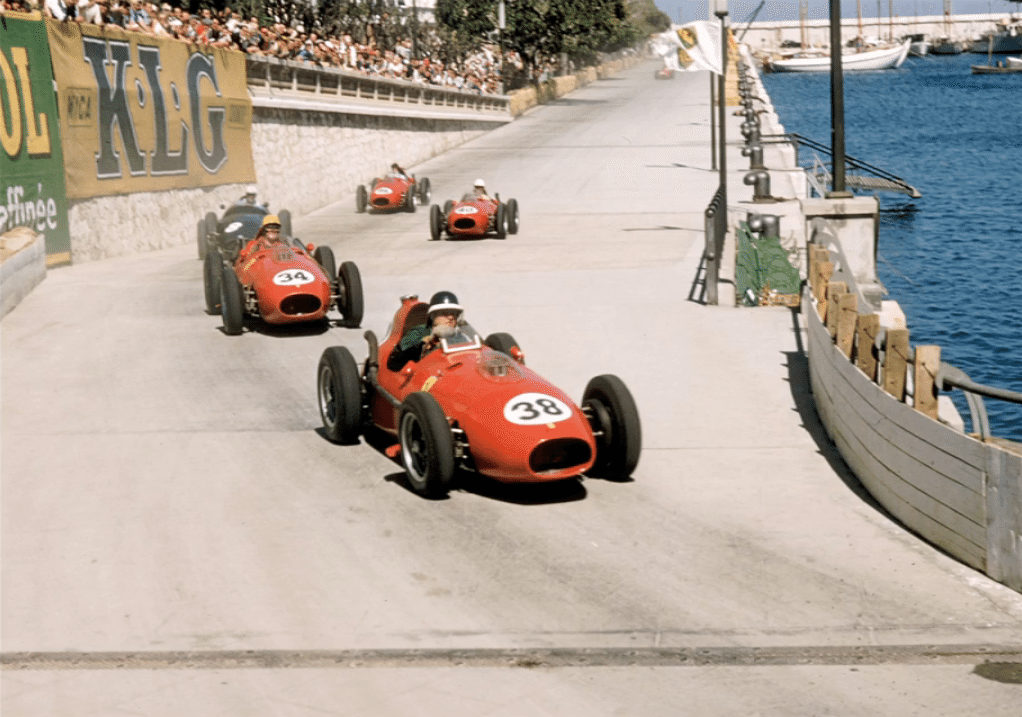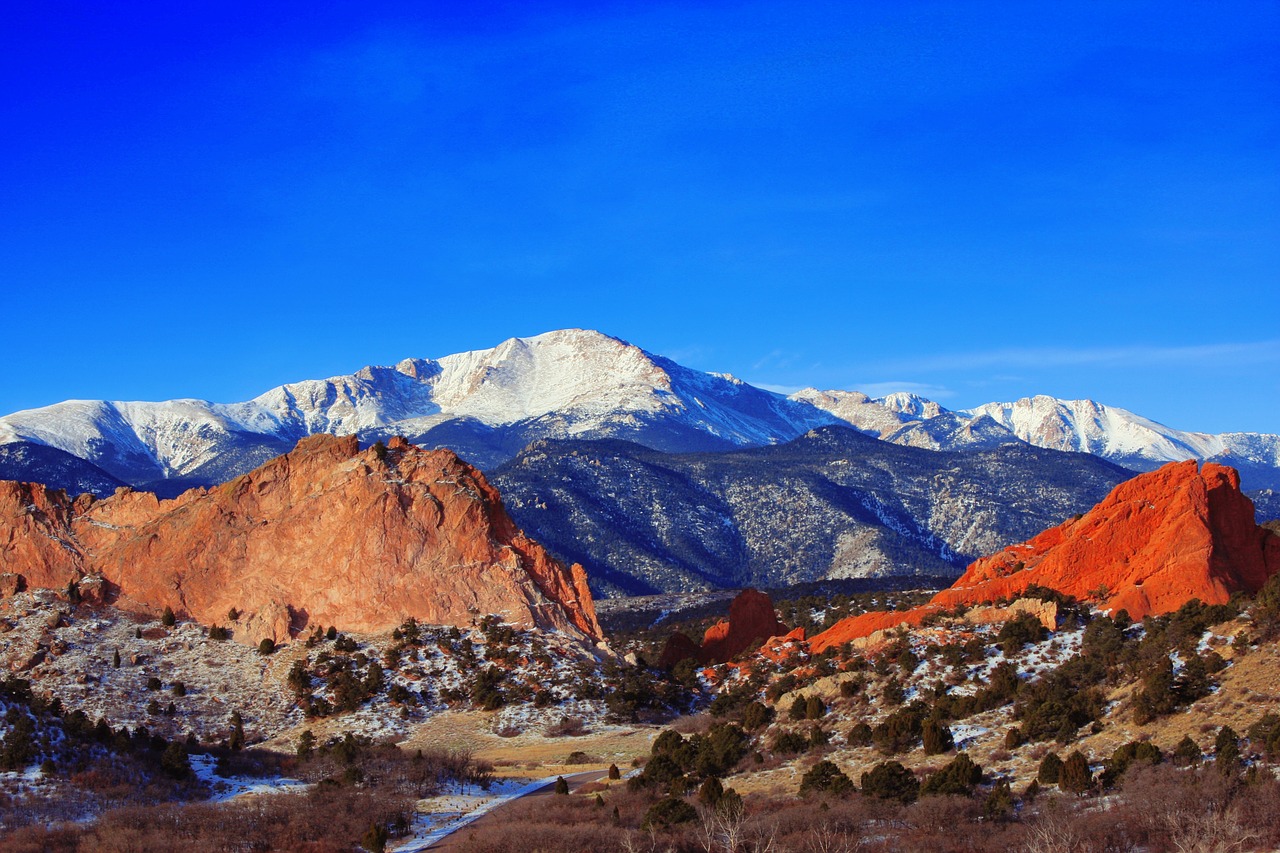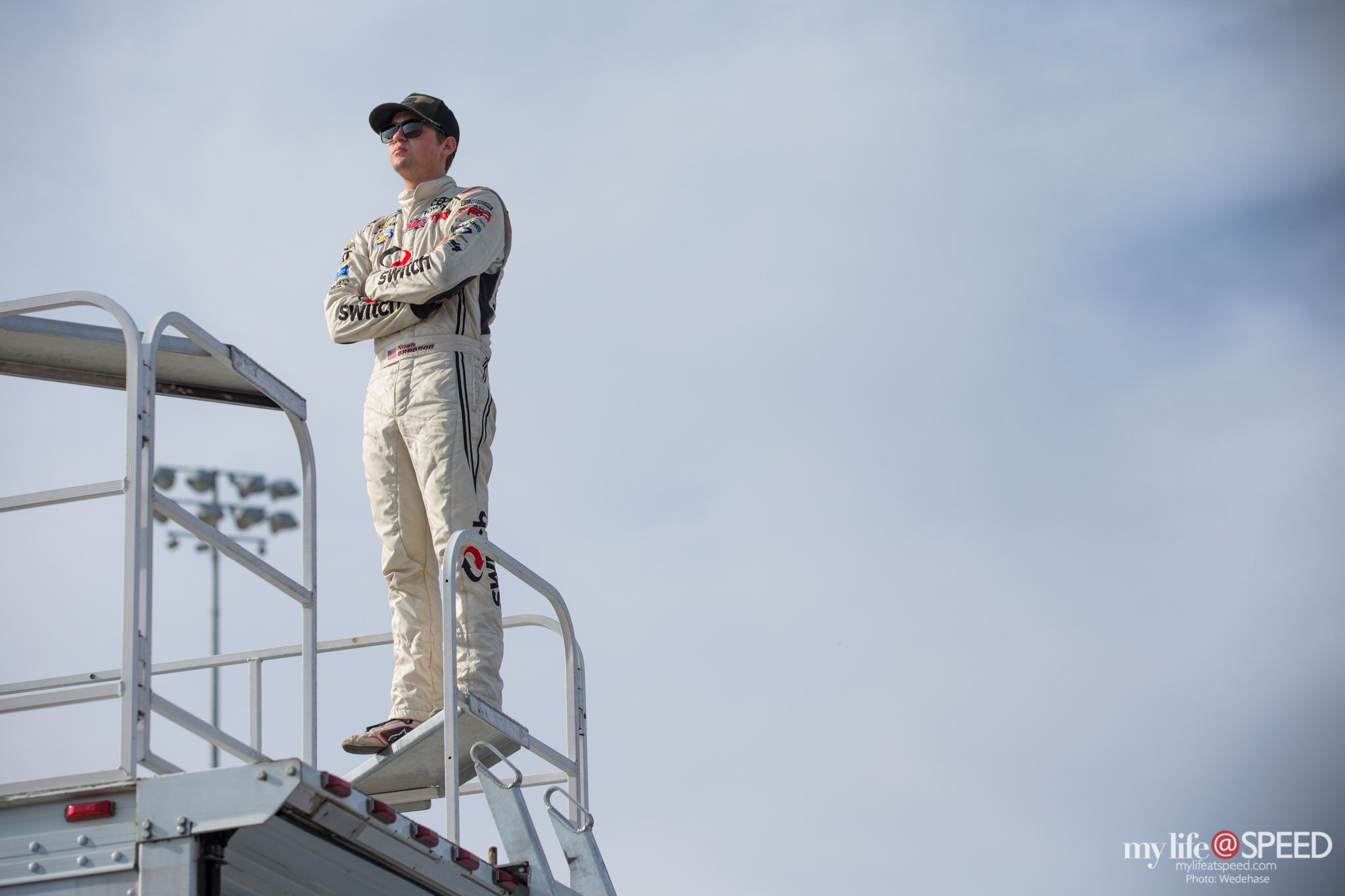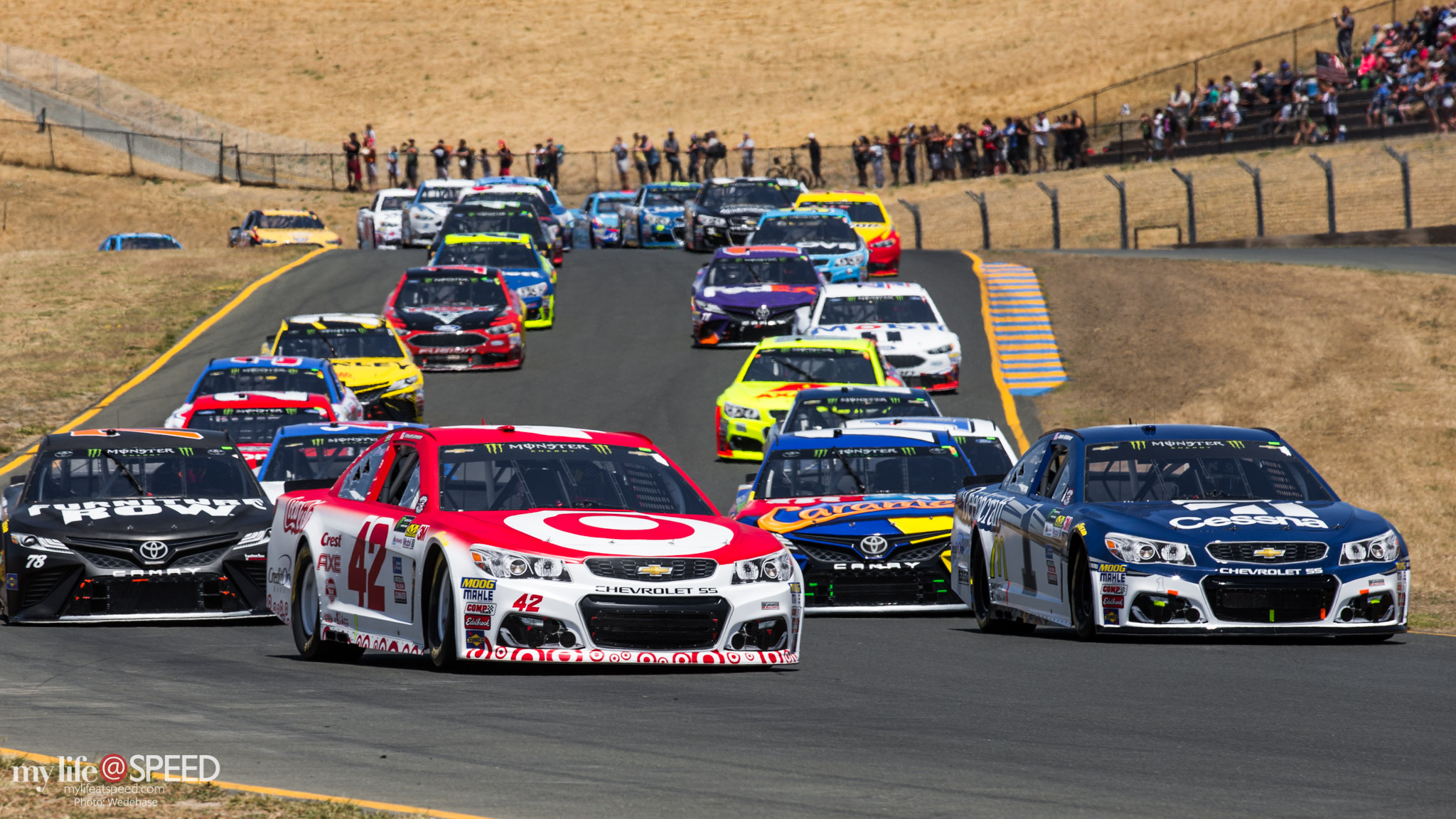Phil Hill was a Formula One racing champion and legend who also happened to be a Leica enthusiast. In this video Derek Hill, who holds a significant racing record of his own, talks about his father’s love of racing and photography. Derek Hill is currently working with Steve Dawson and author Doug Nye to compile his father’s images and stories into a photo book due out in the near future.
From the Phill Hill Website regarding the book – “Inside Track”, is a photo-biographical two-volume book in the works and will be brought to the market soon.
Note: at the time of this post, 12.4.13, it is apparent that the book is still in development.
America’s first Formula 1 World Champion Driver, Phil Hill, driving for Ferrari, was a born motorcar enthusiast. Throughout his front line career he knew them, he loved them, and he drove them blindingly fast, with great mechanical sympathy. To show “the folks back home” where he had been, and what he had seen, he loaded his 35mm Leica M3 with color-true Kodachrome film and wielded it with outstanding artistry.
Steve Dawson, an Orange County based photographer worked with Phil at his home in Santa Monica over a time-span of many years, going through the 35mm slides Phil stored away in boxes. In collaboration with acclaimed motorsport author, Doug Nye, a book titled “Inside Track”, a two-volume work will include over 900 of Phil Hill’s photographs taken over the course of his career.
Phil died at the age of 81, in August 2008, finally giving way to Parkinson’s Disease. In his memory, Dawson will share the pictures that he took throughout his illustrious career and Nye will tell the stories as Hill remembered them.
What was very interesting were the few images that appeared of Pikes Peak that Hill had shot during the prime of his career. There is a “Phil Hill” listed as running Pikes Peak in 1950 in an Allard Special with a time of 18:34.5 and is believed to be the F1 Champion. What seems odd, that a racer, early in his career, with the talent of Phil Hill would return to Pikes Peak the next year, not as a racer but as a mechanic for Tommy Lee. Lee raced the 1938 ALFA ROMEO 8C 2900 MILLE MIGLIA at Pikes Peak and Watkins Glen in 1951 . The mechanic role seems correct as Hill would later buy the Alfa and drove it to victory at Pebble Beach, winning the Del Monte Cup in 1951.
With the all the knowledge I have of Pikes Peak, I cannot find out definitively if Hill actually piloted a vehicle himself on race day to the summit.
5.19.15 – Correction: From Matt (see comment below)- Phil Hill drove a Mercury Powered Allard in the PPHC in 1951. Great article, having looked at my photo collection. The color picture from PPHC of car number 63 is Johnny Mauro in the “City of Tacoma ” car. I have a picture of Louis Unser in the same turn in 1951 and all of the parked cars are the same.
I had no idea of Phil Hill’s involvement (and love) of Pikes Peak. Hill came back to Pikes Peak as a photographer, not a racer. Check out this video to see some of the other amazing shots from Phil Hill. CNaz
Phil Hill Career:
Fifty years ago a young race driver born in Santa Monica, California, competed at the highest level of racing and became the Grand Prix World Champion in 1961. No American born racer had accomplished this lofty goal before. Hill’s championship was not a story of an unknown driver becoming an overnight success; rather, Hill was a seasoned racer with a long string of successes both domestically and internationally under his belt.
1949 – The Beginning
Hill’s first victory of note came at the old Carrell Speedway in Gardena in 1949 driving an MG. Over the next five years, Hill would amass a series of victories and top finishes including races at Palm Springs, Pikes Peak Hill Climb, Elkhart Lake (WI), Pebble Beach, Golden Gate Park, Moffett Field, Madera, Torrey Pines and the Sebring 12 Hours. Hill would also enter several International events including the Nassau Speed Week in the Bahamas, The Carrera Panamericana and in 1953, his first visit to the 24 Hours of LeMans. At these events Hill came in contact with many international racing stars who were impressed with his driving. Word was beginning to spread overseas that this young American driver was someone to keep an eye on.
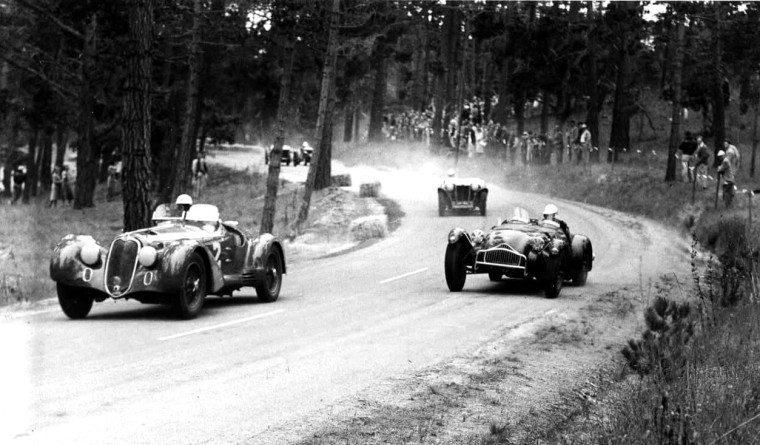
During this period, Hill had driven a variety of sports cars including Alfas, Jaguars, MGs, Allards and Ferraris. It was Hill’s acquisition of a Ferrari in 1952 from the U.S. Distributor, Luigi Chinetti that would prove to be more than just a car purchase. Hill would successfully race several more Ferraris with Chinetti quietly following his progress. In 1955 Hill would be crowned the Sports Car Club of America (SCCA) D production National Champion and by now, was an established star in the U.S. and ready for a move to the next level of racing.
Ferrari Factory Ride
In 1956, Chinetti arranged a Ferrari for Hill to drive in the thousand kilometer race in Argentina where he would finish second. Then in May, he was scheduled to race a factory Ferrari at the famous Nurburgring in Germany. Ferrari was one of the top European race teams with such great drivers as Fangio, Gendebien, Musso, Castellotti, de Portago and Peter Collins… Hill had arrived! Hill justified his selection to the team by finishing third at the Nurburgring with co-drivers de Portago and Gendebien. He would continue his European racing as a member of the Ferrari sports car team with great success through the balance of 1956, all of 1957 and the first half of 1958 when he won both the Sebring 12 Hour and the 24 Hours of LeMans with Gendebien as co-driver in both events.
While his sports car success was gratifying, Hill was anxious for a shot at Formula One but as always, Enzo Ferrari was played it coy. Impatient to try his hand in an F1 car, Hill accepted an invitation to drive Jo Bonnier’s private Maserati 250F in the Grand Prix of Europe at Reims, France. He did this knowing that it would probably make Enzo Ferrari mad but he wanted to push the issue. Against Ferrari’s wishes, Hill ran the race and finished seventh, a credible position considering he was driving an outclassed car. This race was also the great Fangio’s last race since he retired from racing and Ferrari also lost a team driver when Luigi Musso suffered a fatal crash.
Formula One, Finally
Obviously seeing that Hill had the talent to drive a Grand Prix Car, Ferrari offered Hill a Formula Two car for the German Grand Prix. Hill drove the smaller car to a ninth place finish but one of his Ferrari teammates, Peter Collins, was killed in a crash during the race. Ferrari now had an open spot on their Formula One team and based on his two good results in Grand Prix’s, Hill was selected to take Collins’ position. Finally, Hill had made it to Formula One and on a top team at that. As in sports cars, Hill immediately rewarded Ferrari with two third place finishes in the next two Grand Prix’s at Monza and Casablanca to finish the year.
In 1959 there was more success for Hill in both sports cars and Grand Prix’s. A win at the Sebring 12 Hours and Riverside in sports cars plus two seconds and a third in the Grand Prix’s of Europe, Germany and Italy was topped off by setting several land speed records at Bonneville in an MG streamliner. Another good international season followed in 1960 with a sports car win in Argentina, second in the Targa Florio and a third at the Nurburgring. Hill finished third in the Monaco GP and broke through with his first GP victory at Monza. This was the first victory by an American in a Grand Prix event in thirty-nine years since Jimmy Murphy, driving a Duesenberg, won the French Grand Prix in 1921.
The Championship Year
The 1961 racing season would bring a major rule change to Grand Prix racing and a new world champion. The change was a reduction in engine size from 2.5 liters to 1.5 liters which had been mandated by the sport’s governing body, the FIA. This suited Ferrari just fine since they had been developing a 1.5 liter engine for their Grand Prix car while the previously dominant British teams were not ready with a new engine at the start of the season. With his first Grand Prix win under his belt and Ferrari seemingly in a favorable position, Hill looked forward to the season getting underway.Hill started off the year with a victory at the Sebring 12 Hours in March with Gendebien as co-driver which was followed by the first Grand Prix of Monaco in May. Hill and his teammate Wolfgang “Taffy” von Trips received their Ferrari GP cars powered by a 60 degree, 1.5 liter, V-6 engine. Another teammate, Ritchie Ginther, was to drive the unproven but latest version car which was lighter, lower with the engine farther forward and producing more horsepower from the 120 degree V-6. This new car was the “Shark Nose” Type 156 which Ginther had been testing for many months.
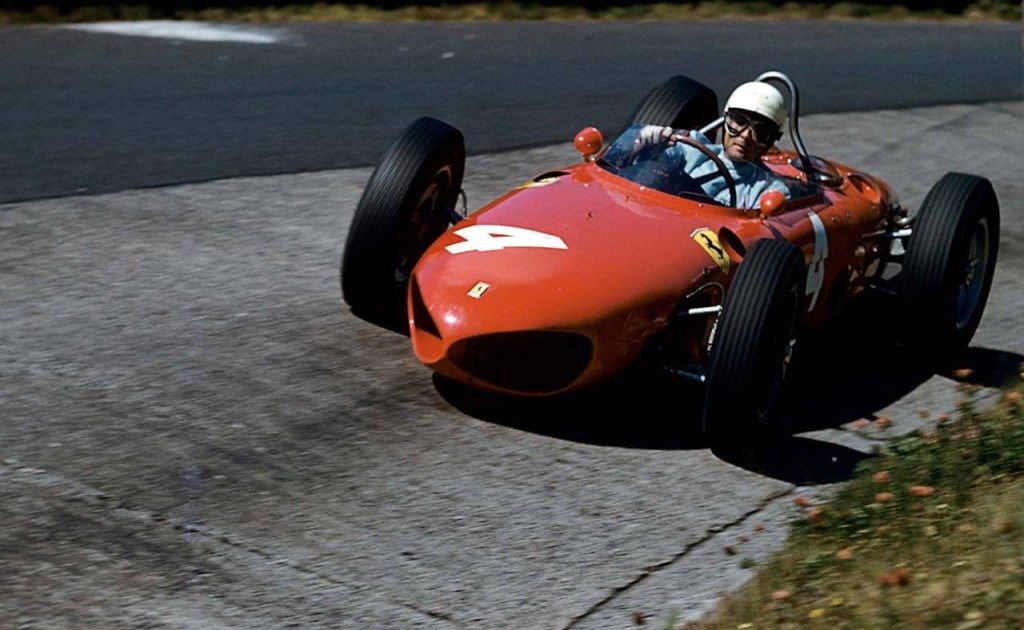
Stirling Moss won the poll and not surprisingly, Ginther out qualified both Hill and von Trips and was on the front row with Moss and Jimmy Clark. At the start, Ginther out accelerated Moss and took the lead but the positions were soon reversed with both Hill and von Trips back in the pack. As the race progressed, Moss continued in the lead but Hill had moved up to pass Ginther into second and began pressing Moss with von Trips falling back.
As the race was coming to a close, Hill began to experience carburetor and brake problems so he waved Ginther by to pursue Moss. Ginther closed on Moss but could not pass before the checkered flag with Hill coming home in third and von Trips in fourth, a lap down. Besides the team cars finishing well, the fact that the unproven car driven by Ginther had clearly been the fastest car on the circuit, was very encouraging for Ferrari.
Next up for Hill and Team Ferrari was the Dutch Grand Prix at Zandvoort. Based on Ginther’s success at Monaco, Ferrari brought three of the new 120 degree V-6 engine cars for Hill, Ginther and von Trips. Qualifying brought a smile to Team Ferrari as von Trips took pole with Hill and Ginther sharing the front row of the grid. At the green flag, von Trips was away in first with Hill second, closely followed by Graham Hill with Ginther slotted in behind Jimmy Clark but with an ailing car. Von Trips would be unchallenged in his run to the checkered flag but Clark moved up to have a race long dice with Hill who eventually passed Clark and pulled away to a fine second place.Ginther’s car developed more problems which allowed Moss to slip pass into third and that is how they finished. With a first, second and fifth, Team Ferrari clearly showed they were the cars and drivers to beat this season.
Two Down, Five to Go
The third GP of the season in Belgium at Spa further proved Ferrari’s superiority as they took the first four places with Hill the winner, followed by vonTrips, Ginther and guest driver, Olivier Gendebien. This may look like a walk-over but the 1961 GP season was full of top drivers including Jack Brabham, Dan Gurney, John Surtees, Jimmy Clark, Graham Hill and Stirling Moss.
Unfortunately, all these drivers were driving cars that could not match the new Ferrari’s pace in combination with their three skilled drivers. The point standings with two races in the books had Moss and von Trips tied with twelve points and Hill close behind with ten. The Ferrari dominance in this race began with Hill winning pole position followed by von Trips, Gendebien and Ginther with Hill the only driver able to a lap under four minutes on this very fast course. After conceding the lead for a few laps after the green flag, Hill and his teammates soon moved into the top four positions where they would remain for the balance of the race with Hill winning followed by von Trips, Ginther and Gendebien.
To show what an advantage Ferrari had, Gendebien’s car was the older model with the 60 degree V-6 engine yet he was faster than any of the other competitors. Hill now lead the point standings after three races with nineteen points, von Trips with eighteen followed by Ginther and Moss tied with twelve. The Grand Prix “circus”, as it was affectionately known, moved on to Reims, France in July. In a repeat of the previous race, Ferrari swept the front row in qualifying with Hill on pole then von Trips and Ginther. Giancarlo Baghetti was back in the fifth row driving the older model car. As the start of the race drew nearer, Hill was not happy since he was told by the Ferrari Team manager that he was not to win the race, it was to be von Trips to take.
Hill followed team orders and even though he was faster than von Trips, he dutifully let von Trips lead until a stone punctured von Trip’s radiator which ended his race. Hill moved into first and stretched his lead until he spun trying to out brake Moss into a corner also allowing Ginther to pass. By the time he restarted, eight cars had passed and he was over a lap down on the leader. Ginther then went out with an engine problem leaving only the slower Baghetti to challenge for the lead which he did, passing Gurney and Jo Bonnier to win the third consecutive race for Ferrari. However, it was no points for Hill, Ginter or von Trips.
Points Lead Change
Rain and wind greeted the drivers for the start of the British GP at Aintree in Northern England near Liverpool. Once again Hill showed his speed winning pole with Ginther and Bonnier on the front row, with von Trips in the second row and Baghetti back on row eight. Hill was hoping to get a good start in the rain which would give him much better visibility and a chance to build a lead over his rivals and especially von Trips. At the green flag, Hill jumped into the lead with von Trips, Ginther and Moss trailing behind. Unfortunately on the fifth lap, Hill spun approaching a turn in the downpour but was able to continue at a slower pace. Moss and Ginther had passed Hill and set off in pursuit of leader von Trips with Hill maintaining fourth.
As the race wound down, Moss dropped out with a mechanical problem and under team orders Ginther let Hill pass into second position. Von Trips victory moved him into the points lead with twenty-seven, Hill with twenty-five, Ginther sixteen and Moss with twelve. With only three GPs remaining it was looking more and more like a title fight between von Trips and Hill with Ferrari perfectly happy to let them fight it out.
The pressure was on Hill and von Trips was feeling confident with the points lead and the next race, the Grand Prix of Europe at the famous Nurburgring, was considered his home event. A crowd estimated at 300,000 was on hand for the event, eagerly anticipating what they hoped would be a victory for von Trips. To add to the pressure, Hill was wary of possible team orders that would favor von Trips so he focused on qualifying as high up on the grid to show he was the fastest driver. Hill not only qualified on the pole but did so with a new track record around the fourteen mile, one hundred seventy-four turn course, beating the previous record by fourteen seconds. Von Trips was not able to equal the speed of the faster cars and was on the second row with Ginther further down the grid.
Unfortunately for Hill and von Trips, no one told Moss he wasn’t one of the favorites to win. At the green flag, Moss tucked in behind leader Jack Brabham and passed when Brabham spun off with Hill close behind. Behind these two there were all sorts of mini-disasters happening with cars going into ditches, spinning off course or suffering other mechanical failures…and this was only the first lap! On the third lap, Moss was slowly pulling away from Hill and von Trips had moved up to third. Von Trips then passed Hill and the order remained the same to the checkered flag – Moss, von Trips and Hill. Von Trips now held a four-point lead over Hill, thirty-three to twenty-nine while Moss and Ginther trailed with twenty-one and sixteen points respectively. With the points race so close, the next race, the Grand Prix of Italy at Monza, would decide who would be the new World Champion.
Hill arrived at Monza for the Grand Prix to find the Italian organizers had stipulated that the full, 6.2 mile long course, including the infamous banking, would be used for the race. It was a good thing Ferrari had an updated car for Hill with a few more horsepower but during practice, he was only fourth fastest among his teammates. Much to Hills chagrin, von Trips won the pole with the young Ricardo Rodriguez putting an older Ferrari on the front row followed by Ginther and Hill on the second row. Hill felt sure something was amiss with his car’s engine and insisted on a replacement. An inspection of his original engine revealed a broken valve spring and had Hill not insisted on a change, he never would have been competitive in the race. Now, with a new engine, he was feeling more positive about his chances to make a good run at the title.
The Italian race organizers had opened up the event to include several second tier drivers and cars so a large field of thirty-two cars took their positions on the grid for the race. Unfortunately, the organizers had also scheduled a six-hour sports car race that preceded the Grand Prix so the track surface was not in the most ideal condition. As the starter dropped the flag, the field roared off down the track with Brabham taking the lead over von Trips with Jimmy Clark initially taking third before being passed by both Hill and Ginther. At the end of the first lap, Hill took the lead with Ginther, Rodriguez, Clark, Brabham, von Trips and Baghetti in a close knit pack. As Hill began to lengthen his lead, von Trips passed Brabham and Clark but in doing so, his rear wheel touched Clark’s front wheel sending both cars off the track at high speed. Clark’s Lotus came to rest at the tracks edge but von Trips Ferrari careened up the banking, hit a guardrail then into a chain-link fence, killing fourteen spectators before spinning back onto the track. Von Trips had been thrown out of his car onto the track suffering fatal injuries.
Unaware of the tragedy that had taken place behind them, Hill and Ginther raced on, exchanging the lead. As the race progressed, Hill’s main competitors dropped out one by one – first Brabham, then Rodriguez, Baghetti and Moss, leaving only Ginther and Dan Gurney to fight for the lead. However, Hill was driving a masterful race and increased his lead as the race progressed, eventually taking the checkered flag with a thirty-one second lead over second place Gurney with Bruce McLaren a distant third. All the Ferrari’s but Hill’s had dropped out and the loss of von Trips overshadowed Hill’s wonderful accomplishment, he was now the new Grand Prix World Champion.
1961 had been a very successful year for Phil Hill with sports car victories at the 24 Hours of Le Mans, the 12 Hours of Sebring, two Grand Prix wins and the world championship. Now, fifty years later, Hill is still the only American born Grand Prix Champion and one of the greatest sports car endurance drivers of all-time.
Words by: Gary Horstkorta – Danville-Delegance

